“We are at a time of present crisis.” When Sarastro addressed his boardroom of business-suited acolytes last night, there can’t have been many in the Coliseum whose thoughts didn’t turn to English National Opera. Even by the standards of a company that has spent most of its history fighting for survival, 2015 was a year of unprecedented difficulty. Whether crisis becomes catastrophe remains to be seen, but there couldn’t be a more emphatic portent of success, a better-timed metaphor, than this Magic Flute. Frankly a bit of a dud on its first outing back in 2013, it has been transformed by ENO’s new music director Mark Wigglesworth into something rich and deliciously strange.
Even this visual charge is nothing to the heat coming off Wigglesworth’s orchestra
Simon McBurney, theatre’s magus-in-chief, should always have been a good fit for Mozart’s phantasmagorical fantasy. Perhaps it was the unusual restrictions and demands of the opera house that stymied things last time round, but true to the director’s process of meticulous devising, revising and workshopping, this first revival is a different creature to that flat, heel-dragging evening.
Where Nicholas Hytner’s Flute gave us charm and David McVicar’s Royal Opera production brings beautiful stage-pictures, McBurney’s is pure invention. It’s a bold imagination that takes a work beloved for its magic and strips that all away, exposing the nuts and bolts of theatrical illusion, from Foley artists and videographers (positioned in full view of the audience), to the orchestra itself, raised up from the pit and on show. It takes an even greater imagination to pull back the theatrical curtain and somehow still sustain the illusion, all the greater for the new complicity of the audience.
 From Finn Ross’s elegantly manipulated video designs and Matthieu Maurice’s vivid soundscapes to Robin Beer’s delightfully naïve chalk projections, we’re bombarded with sensation. If that sensory excess, coupled with the complications of Mozart’s plot, occasionally proves distracting, it also generates an energy that helps propel this baggy drama.
From Finn Ross’s elegantly manipulated video designs and Matthieu Maurice’s vivid soundscapes to Robin Beer’s delightfully naïve chalk projections, we’re bombarded with sensation. If that sensory excess, coupled with the complications of Mozart’s plot, occasionally proves distracting, it also generates an energy that helps propel this baggy drama.
But even this visual charge is nothing to the heat coming off Wigglesworth’s orchestra. From the nervy, dangerously swift Overture to the final chorus, he keeps the pace up throughout, while still finding space for moments of musical contemplation all the more ecstatic for their rarity. Lucy Crowe’s rapturous “Tamino mine” will stay in the ears for a long time, and Allan Clayton’s “Portrait" Aria (Clayton pictured above, with Eleanor Dennis, Catherine Young and Rachael Lloyd as the Three Ladies) is just the start of an evening of lyrical, generously projected beauty. The raised orchestra makes for a more prominent instrumental balance, but while we gain colour and some gorgeous shading, Wigglesworth’s careful balancing ensures we lose little from the singers.
 In Crowe and Clayton the production has gained immeasurably, both vocally and dramatically – lovers whose uncomplicated sincerity carries off their sudden courtship, whose sweetness is tempered by Peter Coleman-Wright’s bluff Papageno. While the production doesn’t entirely convince me that an older Papageno is an improvement on the usual thirty-something (and reducing a role with such fine music to character singing isn’t ideal), Coleman-Wright brings bags of personality and some unexpectedly fine keyboard skills to his bird-catcher. James Creswell’s Sarastro (pictured above with Crowe) is a cult-leader whose singing could convince anyone to follow – a fine foil for Ambur Braid’s strident but efficient Queen of the Night, whose bitter venom infects even her music. Only Stephen Jeffreys’s translation still chafes in its attention-drawing archaisms and verbal fuss, a layer too far in an already heavy-laden production.
In Crowe and Clayton the production has gained immeasurably, both vocally and dramatically – lovers whose uncomplicated sincerity carries off their sudden courtship, whose sweetness is tempered by Peter Coleman-Wright’s bluff Papageno. While the production doesn’t entirely convince me that an older Papageno is an improvement on the usual thirty-something (and reducing a role with such fine music to character singing isn’t ideal), Coleman-Wright brings bags of personality and some unexpectedly fine keyboard skills to his bird-catcher. James Creswell’s Sarastro (pictured above with Crowe) is a cult-leader whose singing could convince anyone to follow – a fine foil for Ambur Braid’s strident but efficient Queen of the Night, whose bitter venom infects even her music. Only Stephen Jeffreys’s translation still chafes in its attention-drawing archaisms and verbal fuss, a layer too far in an already heavy-laden production.
Mozart’s flute may enchant the most dastardly of villains, but its magic is as nothing to the sleight of hand that Mark Wigglesworth has performed with this glorious revival. Now we can only wait and hope that he can pull off the same trick with the ailing ENO itself.
- The Magic Flute at ENO until 19 March



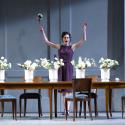
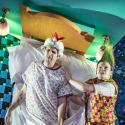

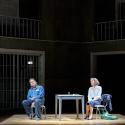


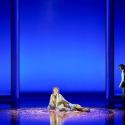


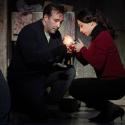
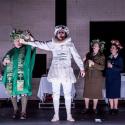
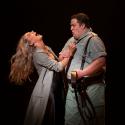
Add comment